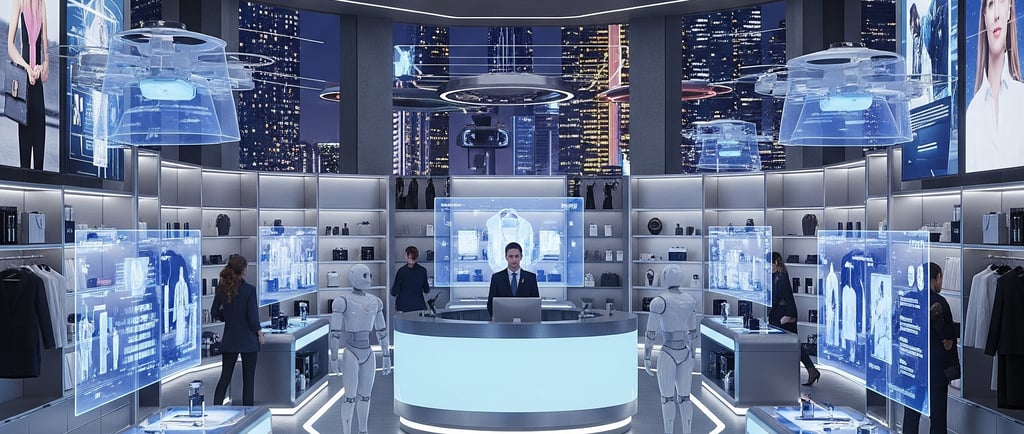What future developments could expand AI’s role in retail innovation
Future developments that could expand AI’s role in retail innovation are projected to reshape how retailers engage customers, manage operations, and drive sustainability.
RETAILAI
Anil Junagal
7/26/20252 min read


Future developments that could expand AI’s role in retail innovation are projected to reshape how retailers engage customers, manage operations, and drive sustainability. Based on the latest research and trends emerging in 2025, here are the most significant avenues poised to extend AI’s influence in the retail sector:
1. Generative AI for Hyper-Personalization and Omnichannel Experiences
Advanced generative AI will enable retailers to deliver more immersive, conversational, and tailored customer experiences, both online and in-store. This includes sophisticated virtual try-ons, dynamic content creation, and interactive shopping assistants that adapt in real-time to individual consumer needs and preferences. AI-driven omnichannel integration will ensure seamless transitions between physical and digital touchpoints.
2. Predictive and Prescriptive Retail Analytics
AI advancements in spatial analytics and predictive modeling will provide retailers with granular insights into shopper behavior, optimizing product placement, inventory, and in-store layouts. These data-driven systems will facilitate real-time adjustments in marketing strategies and operational decisions, boosting efficiency and sales.
3. AI for Sustainable and Circular Retail Models
New AI tools will help retailers minimize waste, manage resources better, and support circular economy practices such as resale, recycling, and dynamic product life-cycle management. For example, AI can predict demand more accurately, reducing overproduction and enabling “just-in-time” manufacturing and distribution for sustainable retail operations.
4. Robotics and Smart Automation in Retail Operations
Robotics, guided by AI, will increase automation in warehouses, stores, and supply chains—handling tasks from inventory management to customer service. This not only addresses labor shortages but improves speed, accuracy, and cost efficiency. It is projected that by 2026, a significant majority of retailers will employ AI-driven robotic solutions to streamline logistics and order fulfillment.
5. Ethical, Trustworthy, and Transparent AI Frameworks
As AI becomes more embedded in retail processes, the development of robust frameworks for ethical AI use—ensuring transparency, privacy protection, and bias mitigation—will be crucial for long-term trust with consumers and regulators. Future AI systems will include mechanisms for explainability in recommendations and decisions, particularly in high-stakes areas like credit and pricing.
6. Real-Time and Adaptive Supply Chains
AI-powered, real-time supply chain systems will adapt instantaneously to changes in consumer demand, global logistics, and environmental conditions, making retail networks more resilient and customer-responsive. Virtual supply chain “twins” and 3D modeling technologies will allow for rapid scenario analysis and contingency planning.
7. Workforce Transformation and Continuous Upskilling
Generative AI agents and AI-powered training platforms will drive upskilling and reskilling for retail employees, supporting adaptation to new technology and expanding retailer capacity for enterprise-wide innovation. Such developments can help retail workers transition to roles that demand higher digital and customer-experience skills, enhancing workforce agility.
8. Integration of AI with Emerging Technologies
The convergence of AI with blockchain, IoT, AR/VR, and quantum computing will further increase retail innovation—offering new ways to ensure product authenticity, enable autonomous POS, enhance customer interaction, and secure transactions.
Through these advances, AI will continue to be a primary catalyst for retail innovation—moving the industry toward more sustainable, inclusive, and customer-centric business models while solving operational challenges and meeting rising consumer expectations.
Strategy, operations, and digital transformation for modern enterprises.
Info@junagal.com
© 2025. All rights reserved.
